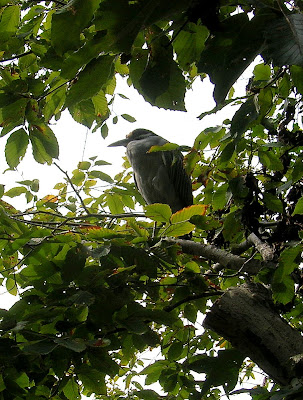Each exhibit tells a story. There is the predator-prey relationship between the chipmunk and the corn snake; the survival adaptations of the flounder and puffer fish; the endangered status of the once plentiful sturgeon, and the geological changes that have created caves.It's a truly fascinating place, and I'd advise you to pay a visit if you're ever in the area.
Our pictures weren't as great as I'd hoped...but you can still get an idea of what we saw.



 Look closely--that's a catfish down there. I think he was albino, because all of his buddies were darker.
Look closely--that's a catfish down there. I think he was albino, because all of his buddies were darker.





 Some quirk of reflection created this picture, which almost looks like it was taken from behind the turtle, but I like it.
Some quirk of reflection created this picture, which almost looks like it was taken from behind the turtle, but I like it. How cute is this red fox?
How cute is this red fox?






 This one's my favorite--the bobcat. I didn't get to see him last time I went to the museum. Hard to believe something to adorable could be a vicious killer, but these bad boys can kill deer.
This one's my favorite--the bobcat. I didn't get to see him last time I went to the museum. Hard to believe something to adorable could be a vicious killer, but these bad boys can kill deer. The red wolves. A litter was born last spring, and three of the four on exhibit were from that litter. I wish I could've seen them as pups--so cute!
The red wolves. A litter was born last spring, and three of the four on exhibit were from that litter. I wish I could've seen them as pups--so cute!

It was a pretty fun day, and the museum is incredibly educational. I'm always slightly uncomfortable at the idea of keeping these once-wild or supposed-to-be-wild animals in captivity, but this is truly better than a zoo or anything like that. You can tell, however, that they're very used to humans--they barely even look at the people walking nearby, and many of them sleep right through loud children running at full tilt down the wooden walkway through the exhibits.
At the same time, though, I understand the necessity for something like this, and the good it does: people need to understand the effect we have on the earth. Seeing so many creatures that have been brought back from the brink of extinction,* and better understanding our relationship with the planet, might just help.
*Of course, after the question I overheard while looking at the red wolves, one of the most endangered animals in the world, I've once again lost all faith in humanity. A girl who couldn't have been younger than fifteen years old (and had no apparent disabilities) said to her friends:
"Oh my God! These wolves are almost extinct! There are four of them here, and they're almost extinct! Hey guys...how does an animal become extinct?"
These days, the average fourth-grader must at least have a simplistic answer to that question, right? Her question was only excusable if she had some kind of cognitive impairment or learning disability, or had been raised in a giant bubble with no human contact and was enjoying her first day out. From all I could tell, none of those was the case.






No comments:
Post a Comment